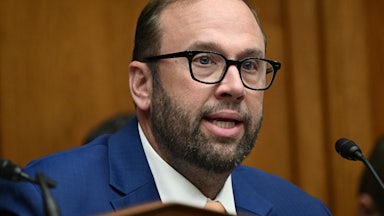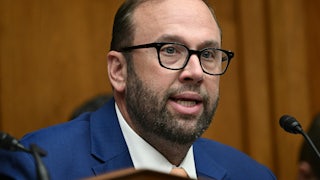This year, 14 states are providing their own child tax credits, supplementing the credit offered by the federal government. While several have recently expanded previous versions of their child tax credits, three states—Minnesota, Oregon, and Utah—have enacted brand new ones in 2023. These new creations are generally less generous than the federal child tax credit that was briefly expanded in 2021 as a part of the American Rescue Plan. Nevertheless, these measures open up a new frontier in state action intended to make the cost of raising children more affordable.
“I’ve told my team, ‘This might be the single biggest impact of anything we did while governor,’” said Minnesota Governor Tim Walz about his state’s child tax credit, which he said could reduce child poverty in the state by 33 percent. “I don’t even know if we can categorize all of the positive impacts that it will make down the road.”
The amount of the Minnesota credit is the most generous of any state to date, offering up to $1,750 for each child up to age 18 in qualifying households. The income threshold to receive the full amount of the credit is $29,500 for one parent, or $35,000 for married joint filers, although families may still receive a portion of the credit up to a certain threshold. The Walz administration had previously estimated that nearly 300,000 households, including more than 500,000 children, would qualify for the credit. Walz told me that, thus far, the credit has been claimed for nearly 360,000 children, with an average benefit of $2,071. (The new child tax credit was just one of several progressive priorities approved by the Minnesota legislature last year.)
Meanwhile, Oregon’s new child tax credit is available for households with children under the age of 6, offering up to $1,000 per child. Like its Minnesota counterpart, it is available for parents without income; however, the income threshold for claiming the full credit is $25,000, and it phases out at $30,000. The Oregon Center for Public Policy, an advocacy group that supports the credit, estimates that around 55,000 children in the state are eligible and that 5,000 could be lifted out of poverty. According to a spokesperson for the Oregon Department of Revenue, the state has 27,000 tax returns claiming the credit and has paid out more than $30 million in credits thus far.
However, as with any “fully refundable” tax credit—that is to say, one that is available to those too poor to pay income taxes—the challenge is in ensuring that families who might not otherwise file their taxes do so in order to claim the benefit. The Oregon Center of Public Policy has partnered with the state government in an effort to “fill in some of the gaps” to reach very poor potential claimants, said Tyler Mac Innis, a policy analyst at the organization. This bolstered effort to find eligible beneficiaries is being fought on multiple fronts: Radio ads in English and Spanish are on the air, and potential recipients are getting information on both the credit and on free tax preparation services via webinar.
“We have a whole bunch of work ahead of us to make sure that families are able to fully access credits like the Oregon kids credit,” said Mac Innis, expressing hope that the state might eventually set up an online portal for non-filers, similar to what the federal government set up in 2021 to help parents with no income to claim the child tax credit. The Department of Revenue has also provided a “toolkit” for partners to communicate the benefits of the credit, including a flier in 17 languages. A similar effort is underway in Minnesota, where Walz says the state government is partnering with local organizations and leaders to reach low-income families—particularly those who might be skeptical of state and federal government, such as in tribal communities.
While these measures promise to deliver significant gains, they will fall short of the current version of the federal child tax credit—to say nothing of the far more generous version that was offered by the federal government in 2021, which lifted more than three million children out of poverty and cut the child poverty rate nearly in half nationwide. States have “a little bit less fiscal capacity” to enact child tax credits at the level offered by the federal government, said Joshua McCabe, the director of social policy at the Niskanen Center. Minnesota, Oregon, and Utah have recently benefited from budget surpluses, which can help justify creating a new tax credit. But McCabe worried that Oregon’s credit, which had a sharper rate of phaseout than Minnesota’s, would have a lower poverty reduction rate.
For example, the minimum wage in Portland, Oregon, amounts to just over $30,000 annually—meaning that residents earning the minimum wage would not qualify for the credit at all. “They’ve built some pretty major barriers to even just working full-time minimum wage there,” McCabe said.
The Oregon credit may also be implemented on a quarterly basis in the future, as opposed to in a lump sum once annually; however, this would require that the federal government take action to ensure that the credit does not count against a household’s income, thus making them ineligible for other benefits. (Minnesota is also mulling distributing advance payments on a quarterly or monthly basis, which Walz acknowledged may require federal action.)
The initial version of the child tax credit introduced in Oregon had higher income limits, and would have applied to children under age 7. However, Oregon legislative politics were riven with partisan dissension last year, including a six-week walkout by Republican state lawmakers. The fact that a child tax credit was approved at all—and on an overwhelmingly bipartisan basis—is a victory, said Mac Innis.
“I think any reduction in child poverty is meaningful,” said Mac Innis. “We got some of the pieces in there that, if we were to build on this down the line, the hope is to grow it into something that more closely resembles what the federal government had in 2021.”
As the third state that approved an entirely new child tax credit last year, Utah’s newly implemented credit is not fully refundable, meaning that it is not available to parents whose income tax burden is zero. The law went into effect this year, meaning that Utahns will not be able to claim it until next spring. The credit of up to $1,000 was initially written to only be accessible for children ages 1 through 3, although the state legislature recently passed a measure to include children aged 4, beginning with the 2024 tax year. According to the organization Voices for Utah’s Children, no family will receive the full $1,000 credit.
Walz said that implementing a state child tax credit is “just such good politics,” which helps to explain why such policies are being considered and adopted in red states as well as blue ones. “I think what it says is, people are recognizing that this is very popular,” he said, arguing that business-minded Republicans could see the benefit in putting more money into people’s pockets.
States may also be enacting or expanding their own child tax credits because of inaction on a federal level. Although the House passed a bipartisan tax bill that would expand the federal credit in January, it has hit a roadblock in the Senate due to opposition from Republicans in the upper chamber. So states may be the best—if not the only—venue for shaping tax policy in the near term, allowing individual states to tailor policies to their own needs.
“I think the front lines of these battles are in the states,” Walz said.










